At Friends Academy, Community Service Is Part of the Solution
12-10-25
Subscribe
Close
Fill out the form below to receive updates on the latest and greatest within the Friends Academy community.
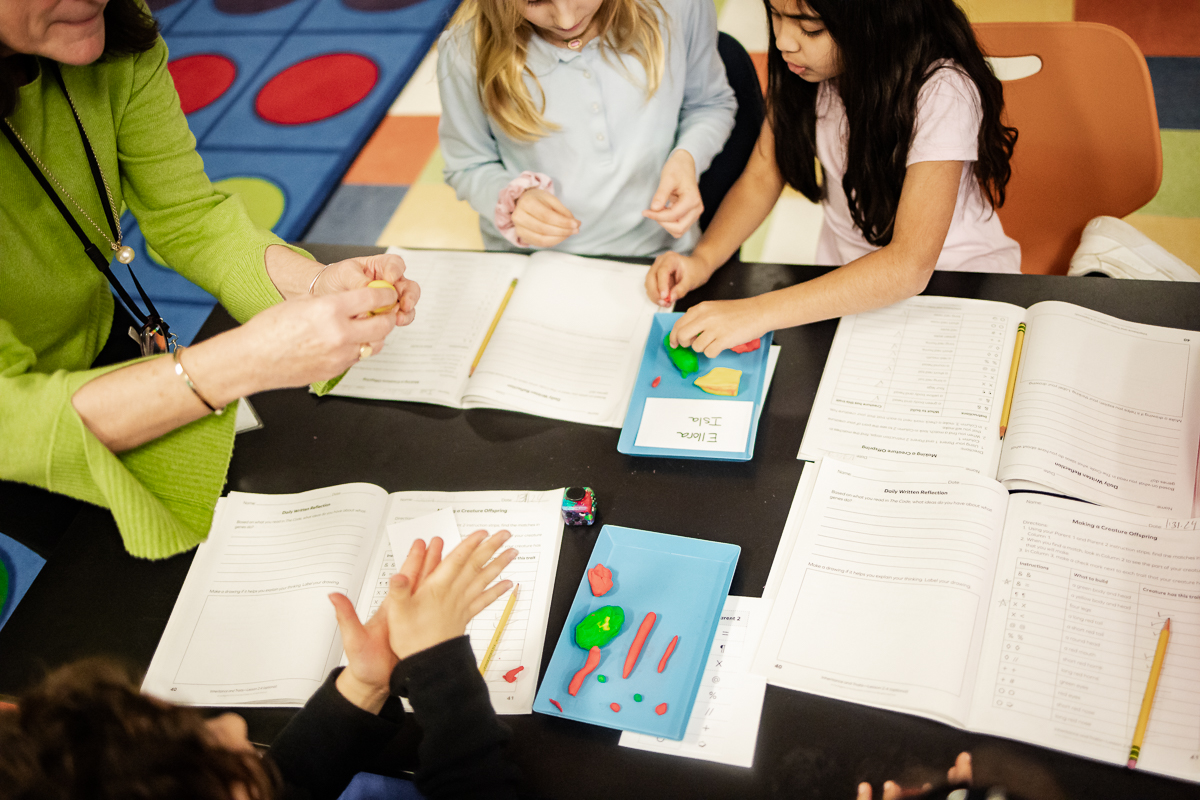
It’s a big question that gets to the heart of genetics – an Essential Question posed to third graders in their current genetics unit, Inheritance and Traits: “Why do offspring have similar traits to their parents, but not always to each other?”
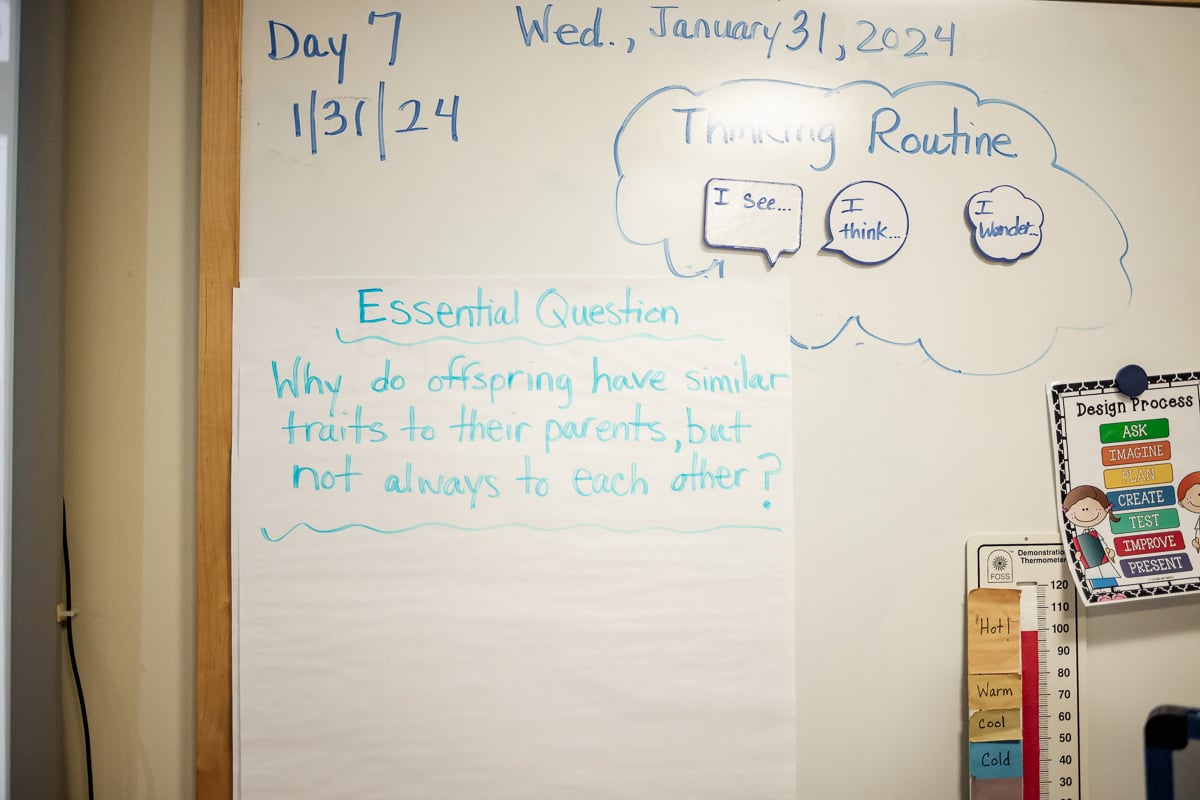
To shed light on this answer, third-grade students got their hands dirty – with a little modeling clay.
“We are learning about how different DNA can be,” said Havana in third grade. “To see how different we are, we have to crack the code,” she added.



To crack the code, students were challenged to build one of several offspring of two “creatures” who exhibited different variations across their countenance – from eye and body color to horn and tail length. Each group of students received a “code” of traits for their new creature; symbols that represented a specific body party, color, or length. By analyzing their gene instructions, then decoding and building, a family of creatures sprang to life.
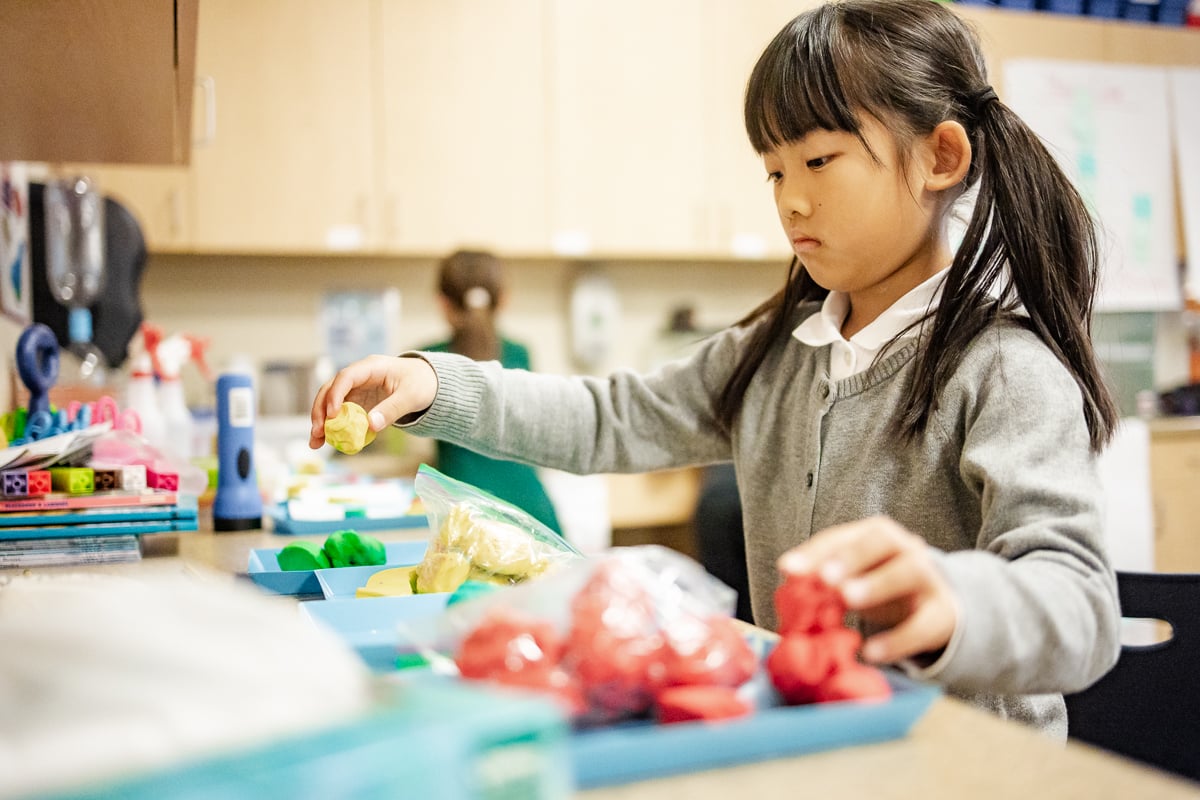

“Do all the offspring look the same?” asked Lower School Science teacher Katie Schlicht of her class as they encircled their creatures on the multi-colored classroom rug and performed a gallery walk. “No!” responded the students. “Do all the offspring have a trait that one of the parents had?” “Yes,” they answered, citing the present variations.

In third grade, students are just starting to learn about genes and DNA; that the traits are passed down from their birth parents and ancestors and how offspring inherit all of the instructions, but only display certain traits.
Mrs. Schlicht spoke to the importance of learning how to model and the opportunities it unlocks for students. “Making models is a major skill. It allows students to apply and interpret their knowledge with a hands-on model so they can visualize the process,” she explained.

To prepare for the hands-on portion of their genetics lesson, third graders studied and sorted birds, wolves, and bears into different species based on similarities and variations in traits. They also investigated traits amongst their peers (i.e. freckles, dimples, eye color, etc.), and then graphed their results. “Within this exercise, we were able to frame the exploration through a Quaker lens,” described Mrs. Schlicht. “When we notice the variation in traits among our classmates it is because we inherit genes for these traits from our birth parents and ancestors. This science-based phenomenon explains the diversity of life,” she said.
Back on the gallery walk, Mrs. Schlicht is encouraging her students to dig deeper and investigate their creatures by sorting similarities versus variations. “Was there a variation in tail shape or just for length?” she asked.

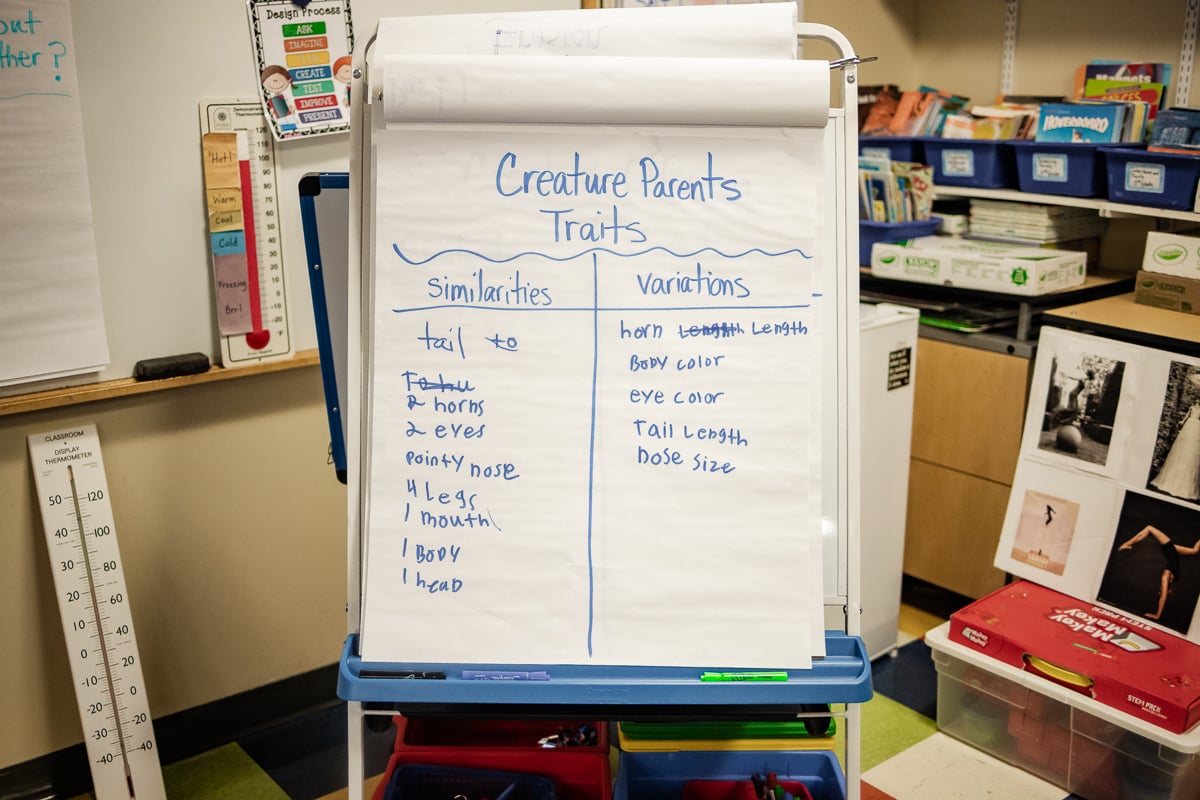
According to Mrs. Schlicht, interpreting and analyzing data to create these creatures based on the gene instructions allows students accessibility to a weighty and abstract concept. “We are trying to give them a concrete container,” she said. It’s also a precursor to the grade’s upcoming visit to Cold Spring Harbor Laboratories, where they will be learning how to extract DNA from strawberries. “This will show them the concrete physical DNA that they’ll be able to observe extracted from the cells,” said Mrs. Schlicht, “and it will help solidify their comprehension.”
After all of the creatures’ traits have been examined and logged, Mrs. Schlicht repeats the question that began the class, “Why do offspring have similar traits to their parents, but not always to each other?”
A flurry of hands goes up. “Because sometimes Parent 1 and Parent 2 are not always alike,” offered one student. “And while the offspring have every gene, some of them show up and some are hidden.”
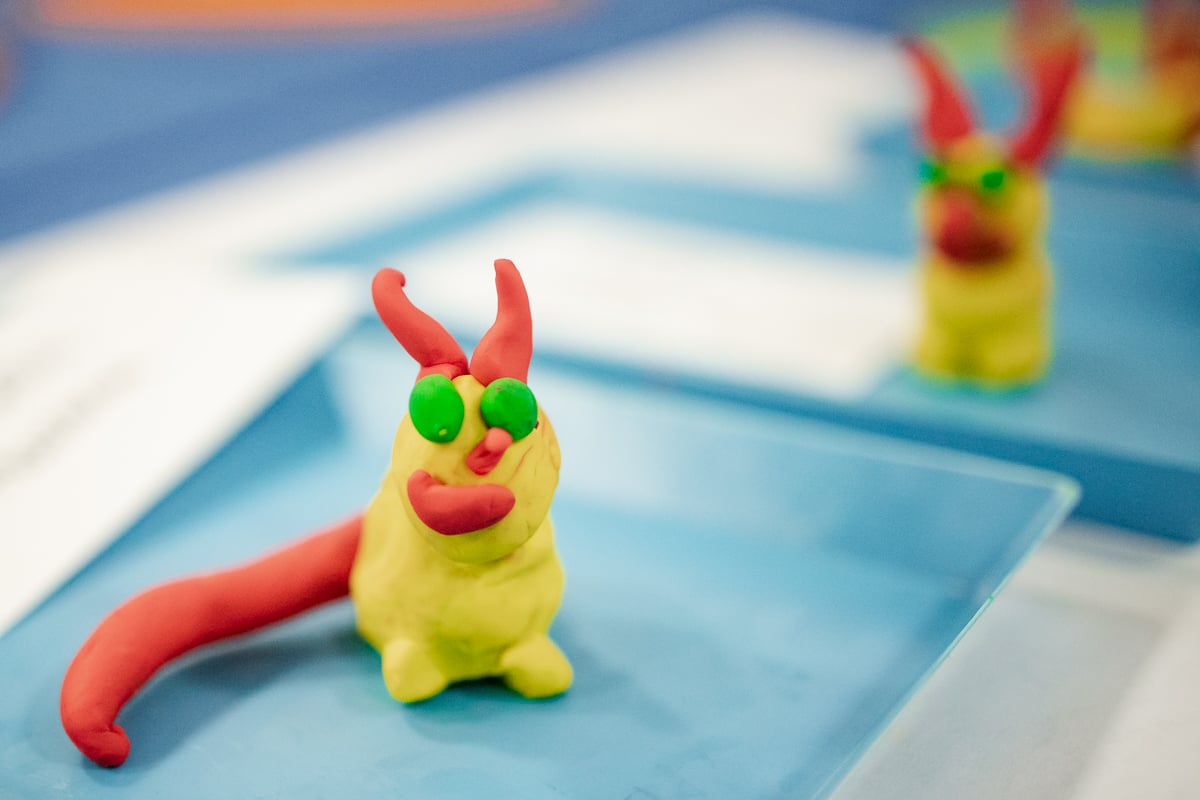
Photography by Alvin Caal/Friends Academy
Did you enjoy this post? Here are a few more we think you'd be interested in:
Fill out the form below to receive updates on the latest and greatest within the Friends Academy community.